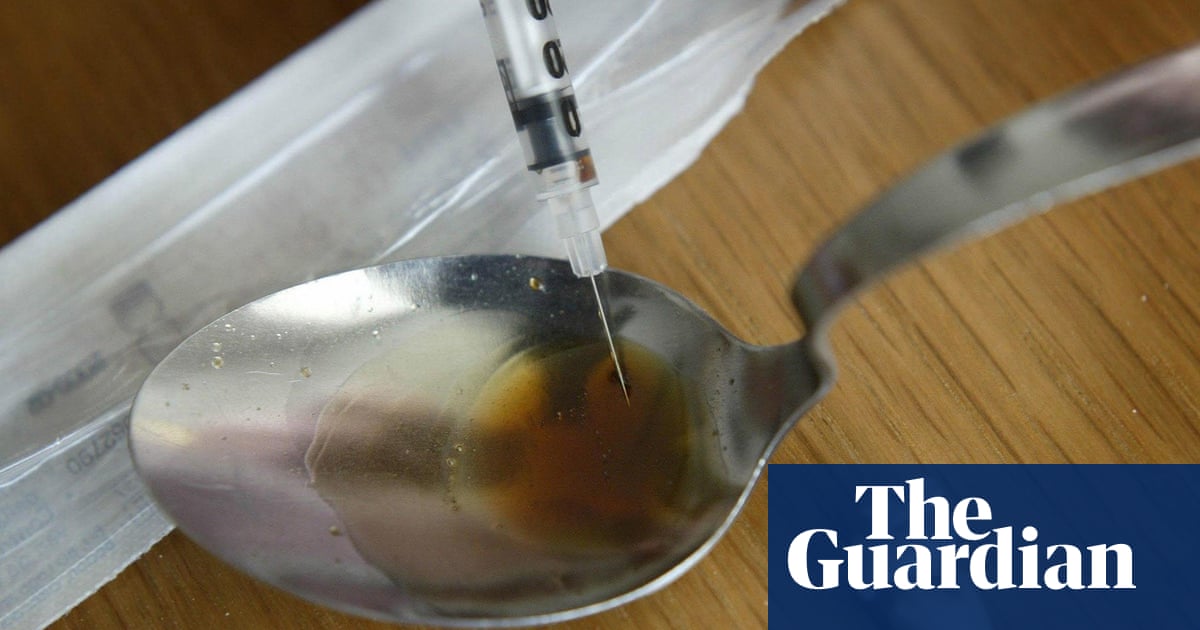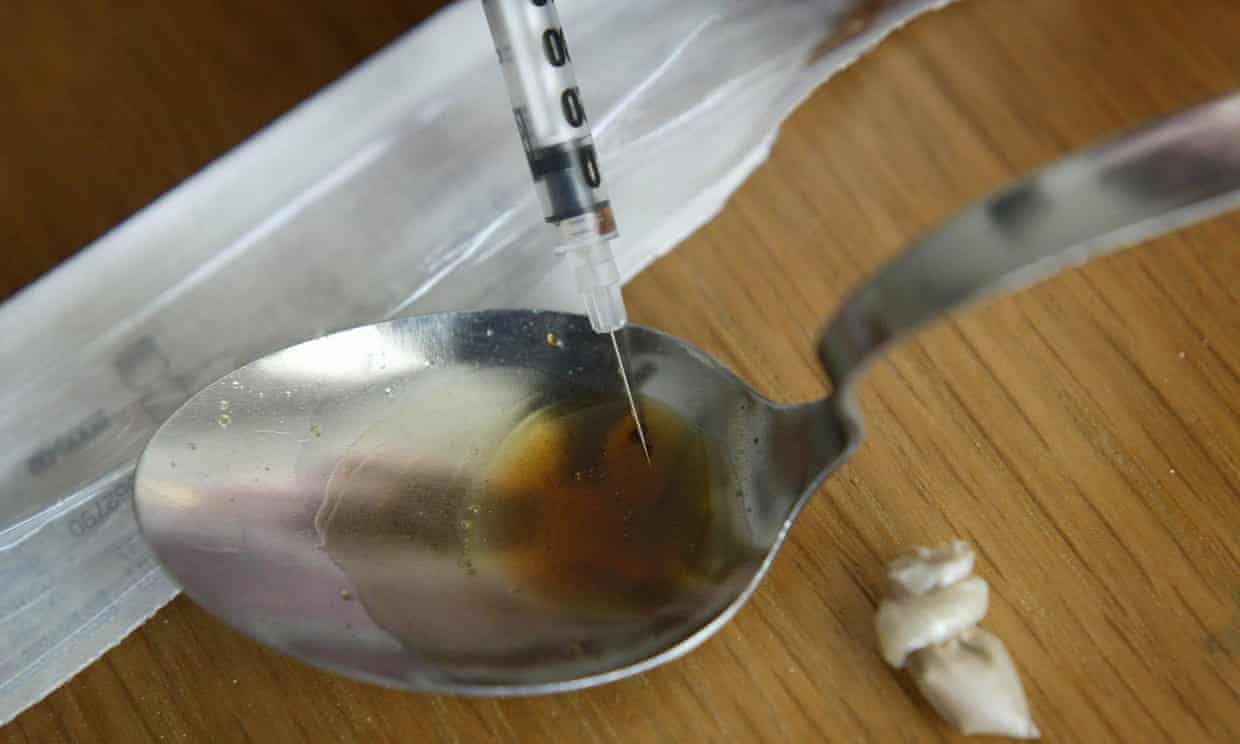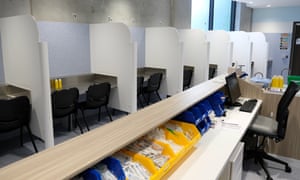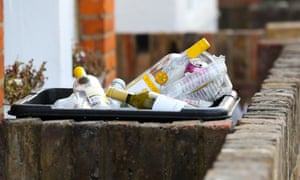‘On top of everything’: coronavirus is making Australia’s drug crisis a whole lot worse


Like most Australians, George* has spent the better part of the past two months trying to stay at home. He watches Netflix, tries to cook new things, and takes his dog Baz for walks to the park near his home in Coburg, north of Melbourne.
But life in a pandemic has its own particular challenges for George.
The 38-year-old is a recovering drug addict. A poly-drug user who “specialised” in heroin and cannabis, his methadone treatment meant that during the peak of the virus he gambled with infection each day by catching the train to a clinic a few suburbs away. Sober for the past seven months, he’s one of thousands of recovering addicts grappling with treatment in the middle of the Covid-19 pandemic.
“In some ways it’s actually good because, all those places you try to avoid, like the places that reminded you of using, you can’t go there anyway,” he tells the Guardian.
“But trying to use the internet for meetings, and then having to travel for [treatment] when the government is saying you should be staying home, it’s not ideal. Plus, I suppose just like everyone it’s lonely. I’m probably a bit of a recluse, I don’t see heaps of people anyway, but I haven’t gone to see my mum for over a month, which is a bit rough when she’s sort of been the one who’s always supported me.”
Earlier this month, the Victorian government issued new guidelines for dispensing methadone and buprenorphine during the Covid-19 crisis. Commonly used as replacement substances for opioid addiction, most users are required to travel daily to pharmacies to access their prescriptions. But the new guidelines mean that, with some restrictions, pharmacies are able to offer takeaway doses earlier in a patient’s therapy. Other states are trying similar things. In New South Wales, addiction specialists are pushing for earlier access to longer-acting replacement therapies to reduce the need for patients to visit clinics.

For George, who is Hepatitis C positive, not having to visit a pharmacy each day means one less stress.
“I think it’s the anxiety more than anything,” he says. “The last thing you want on top of everything is to be worrying you’re going to catch the virus being on the train everyday or getting stopped by police who might just say ‘you’re a junkie’. I said to someone the other day it’d be pretty rough if after everything I’ve done I died while trying to stay clean.”
Sign up to receive the top stories from Guardian Australia every morning
Across Australia, the Covid-19 crisis has prompted a seismic reckoning in addiction medicine. While people like George are managing to find a way through the crisis, experts are concerned that rising substance abuse fuelled by the virus, coupled with new restrictions on an already over-burdened drug and alcohol rehabilitation system, could see Australia staring down a crisis in addiction.
“We’re really concerned about what’s coming down the line in the next six months,” Leone Crayden, the chief executive of The Buttery, a rehabilitation centre near Byron Bay on the New South Wales far north coast, says.
“We know alcohol sales are up, we know anecdotally in our community that people are hoarding prescription medicines. It’s early days yet, but this is what is happening and I just hope governments are aware of it.”
Problems in drug and alcohol treatment in Australia did not begin with Covid-19.
Earlier this year, a special independent commission, appointed to investigate the rise of crystal methamphetamine addiction in New South Wales, highlighted a “significant and long-standing unmet demand for treatment” in Australia. The commission estimated that between 200,000 and 500,000 people were unable to access treatment for drug and alcohol addiction each year, and a survey of residential rehabilitation facilities in NSW found 21% had wait times of between three and six months.
There are also significant gaps in treatment. Before entering residential rehabilitation, most facilities require clients to undergo a period of detoxification. But the inquiry found those services were often not well linked, creating a significant risk of relapse between detoxification and entering rehabilitation. Other forms of treatment are simply not widely available. In 2016 the federal government made the drug Naloxone, which works as an antidote to opioid overdoses, available over the counter without a prescription in Australian pharmacies. But other issues such as cost remain a significant barrier. While the commonwealth government has been trialling free Naloxone access in three states, a new study released this week found the over-the-counter sale of the drug had not substantially increased since it was rescheduled.
Rehabilitation centres and addiction specialists say these issues have all been exacerbated by Covid-19, as services see an increase in demand at the same time as their capacity is severely restricted by the virus.
At the medically supervised injecting centre in Sydney’s Kings Cross, director Marianne Jauncey says social distancing measures mean their capacity has been reduced from 18 to nine clients at any given time. And Jauncey says the reality of social distancing has radically changed how they interact with clients.

“In our stage three area, which is the after-care area, we’ve removed some of the chairs and taken away the tea and coffee, so no one is just hanging around anymore. That’s really hard because the whole idea of stage three is about connection. It’s when we want to connect with our clients and we’ve found it really difficult,” she said.
“The rest of the world is learning about how to connect with technology while at home, but it’s really much harder to connect with someone who is street-based homeless or living in a hotel or hostel if you’re not physically present. We’re like everyone in that we’re trying new and different things, but it doesn’t come naturally to not physically be there. The whole point in a way is about bearing witness.”
While the client base at the injecting centre has not changed, other services are seeing a sudden shift in demand as the stress of Covid-19 impacts on a new cohort of users.
A national YouGov Galaxy poll conducted at the beginning of April found a fifth of Australians had purchased more alcohol since the lockdown began, and were drinking more in home isolation. During one week in April, spending on online wagering increased by 67% while expenditure on alcohol and tobacco increased by 33%, according to a consumer spending database collated by analytics consultancy AlphaBeta and credit firm Illion.
The link between stress and substance abuse or damaging behaviours is well established. Following the devastating Christchurch earthquake in 2011, spending on poker machines in the city tripled. Despite a significant drop in tourism and an exodus of some 10,000 residents from the city, revenue from gambling rose by almost $4m against a downward national trend.
Amanda Curran, vice-president of the Australian Association of Psychologists and a registered psychologist, says factors such as lack of stimulation, increased stress particularly around finances and potential illness are all driving increased rates of substance use.
“On top of that, the disconnect from social support systems such as friends, neighbours, therapists, church and family can contribute significantly to mental strain,” she says.
“For those in recovery, the lack of access to support services is a major concern. Those who were traditionally involved in support groups such as AA or NA may not have computer access to attend online meetings, and they are particularly at risk here.”
Treatment centres such as The Buttery are already seeing the effects of the virus. Crayden tells the Guardian that since lockdown rules came into place the centre has seen a significant increase in calls from people worried about drug and alcohol consumption.
“We’re getting more calls to our intake line from people saying, ‘look, my partner had a lot of control around their drinking or substance use previously because they worked and had their routines, but that’s not happening any more, so the 6pm beer is turning into the 12pm beer’,” she says.
“People have their own harm reduction minimisation strategies – eating well, sleeping well, keeping busy, exercising and just having a purpose. Well a lot of people have been stood down, they’re not working and so they don’t have that purpose. We’re all anxious about contracting coronavirus, about our families. We’re seeing a lot of calls from young mums who are overwhelmed with home schooling. So there’s a lot of anxiety and fear around and we know people self-medicate to deal with that.”
At the same time, Crayden says, The Buttery has been unable to accept any new residential rehabilitation clients since the virus hit. While it is finding innovative ways to continue client outreach – including buying phones and laptops for those without access to technology – she fears the 90 people already on their waitlist face additional challenges while they work on a strategy to allow them to take new clients.
Anecdotal reports of increased substance use coupled with hobbled treatment options has prompted Suzanne Nielsen, the deputy director of the Monash Addiction Research Centre, to warn of a potential for a syndemic – two endemics operating at the same time.
Australia was already grappling with an escalating crisis with opioid-related disease and death rates before Covid-19, and Nielsen fears that unless authorities begin considering the risk of a rise in addiction rates the problem could get worse. While she says easing access to methadone was a good step, governments could do things like expanding the number of medically supervised injecting centres and increasing free access to naloxone.
“Obviously when people inject drugs it’s often multiple times a day, so if you’re really going to reduce the risks associated with that the injecting room really needs to be in your local area so you are able to attend without travelling long distances,” she says.
“In cities as large and geographically diverse as Melbourne and Sydney it really doesn’t make sense to have one place. Kings Cross is no longer the epicentre of injecting in Sydney and we absolutely need more of these services so we can have more equitable access to them.”
Jauncey agrees, pointing to a 2019 recommendation by the NSW deputy coroner Harriet Grahame for a feasibility study into a new injecting centre in Sydney’s south-west after 25-year-old Amaru Bestrin died of a heroin overdose in a publicly accessible toilet at Liverpool hospital.
“People take drugs where they get drugs,” Jauncey said. “We know injecting centres are not a honeypot, so you need to put these services where the market is.”
All of the experts the Guardian has spoken to are also concerned about a changing market profile in illicit drugs. In the same way that the shutdown of major sporting codes has seen online sports betting websites simply shift to offering odds on obscure leagues such as Russian table tennis and Nicaraguan football, experts warn a potential heroin shortage caused by border closures could lead to unintended consequences.
When Australia experienced a significant heroin drought in early 2001, the country saw a 67% reduction in fatal and nonfatal opioid overdoses. But there is also evidence that many long-term users simply switched to other stimulants such as prescription benzodiazepines.
Nielsen says evidence from overseas, and in particular the US, suggests that “supply shocks” in the heroin market could lead users to more dangerous drugs such as the prescription opioid fentanyl.
“We have seen in other countries that when there have bee supply shocks it can be a time when more potent drugs are introduced,” she says.
“Fentanyl is an obvious candidate because it’s easier to ship and because of its potency. It’s one of those things where we just don’t know which way it will go because we don’t have the data yet.”
Jauncey says the potential for users to shift to fentanyl analogues and crystal methamphetamine is a significant concern for those in the industry.
“It’s a vexed issue. We are all expecting to see a change in availability and when you see that there’s a change in access, supply and strength,” she says.
“We don’t make heroin in Australia, all of it is imported from south-east Asia and China, where we have very established trade routes which have now been interrupted.
“At some level it’s crystal ball gazing. But we know when there is a market shock you do see increased treatment seeking. What I hope happens is the treatments are there and available and we’re ready for them. One of the not-so-good outcomes is people can potentially start using other substances, which can be more harmful.
“We’re concerned about the risk of fentanyl and high-potency analogous. The other thing the sector is concerned about is an increase of local methamphetamine. We don’t make our own heroin but we do make our own methamphetamine.”
*not his real name.
 Pathways Drug Rehabilitation Luxury Addiction Treatment & Detox Center
Pathways Drug Rehabilitation Luxury Addiction Treatment & Detox Center


